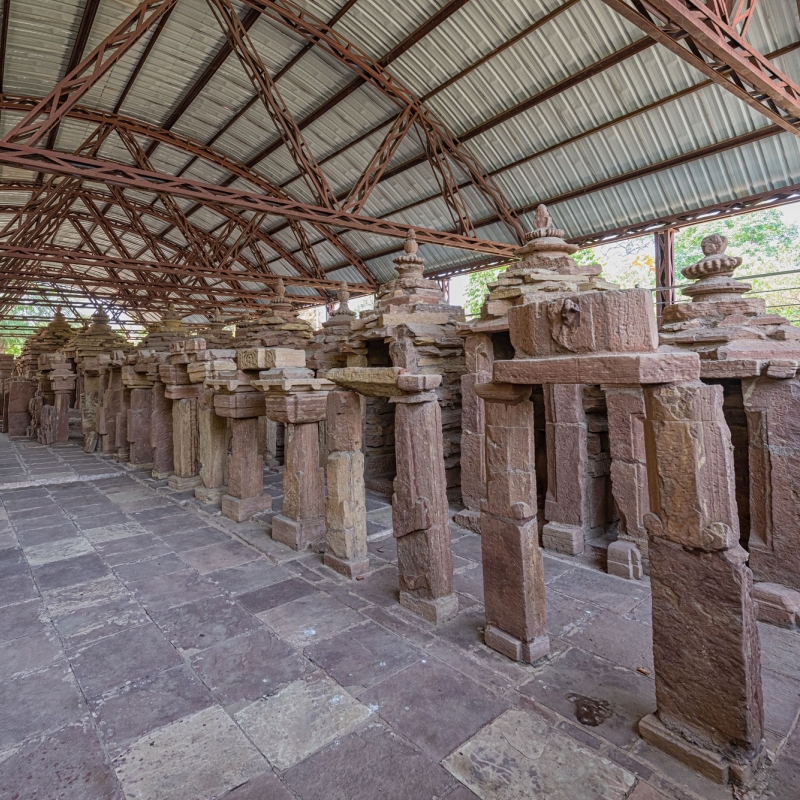Madku Dweep is an island on the Shivanatha river in the Bilaspur district of Chhattisgarh. Its landscape is lush green and the numerous waterfalls evoke a picturesque setting. Besides its topography the site yields archaeological and historical remains from the 11th century. The present site is a reconstruction of the old one.
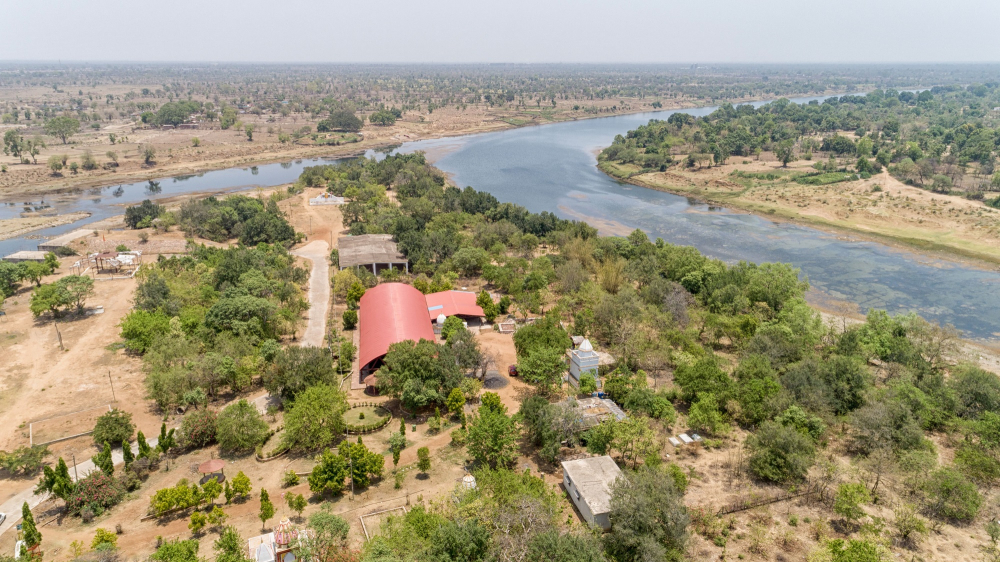
Chhattisgarh. Bilaspur, Madku Dweep Island.
The site of Madku Dweep was discovered in the late 20th century. Excavation at the site unearthed debris of old temples and, sculptures of spiritual importance. In the recent past Arun Sharma, a retired archaeologist from ASI planned and reconstructed the old temples from the site lending it a new character. The unearthed material was re-used to style 19 east facing and one west facing small sized red sandstone temples standing close to each other in a straight line, under an asbestos sheet . Sharma affiliates these structures to the Ratanpur kings of Kalachuri period. In addition, the site has new shrines of Shiva, Harihara (Jalahari), Radha-Krishna and Rishi Mandku, which incorporate the excavated material in their construction. Today the site is a holy place more than a historical site created and named after Saint Madku.

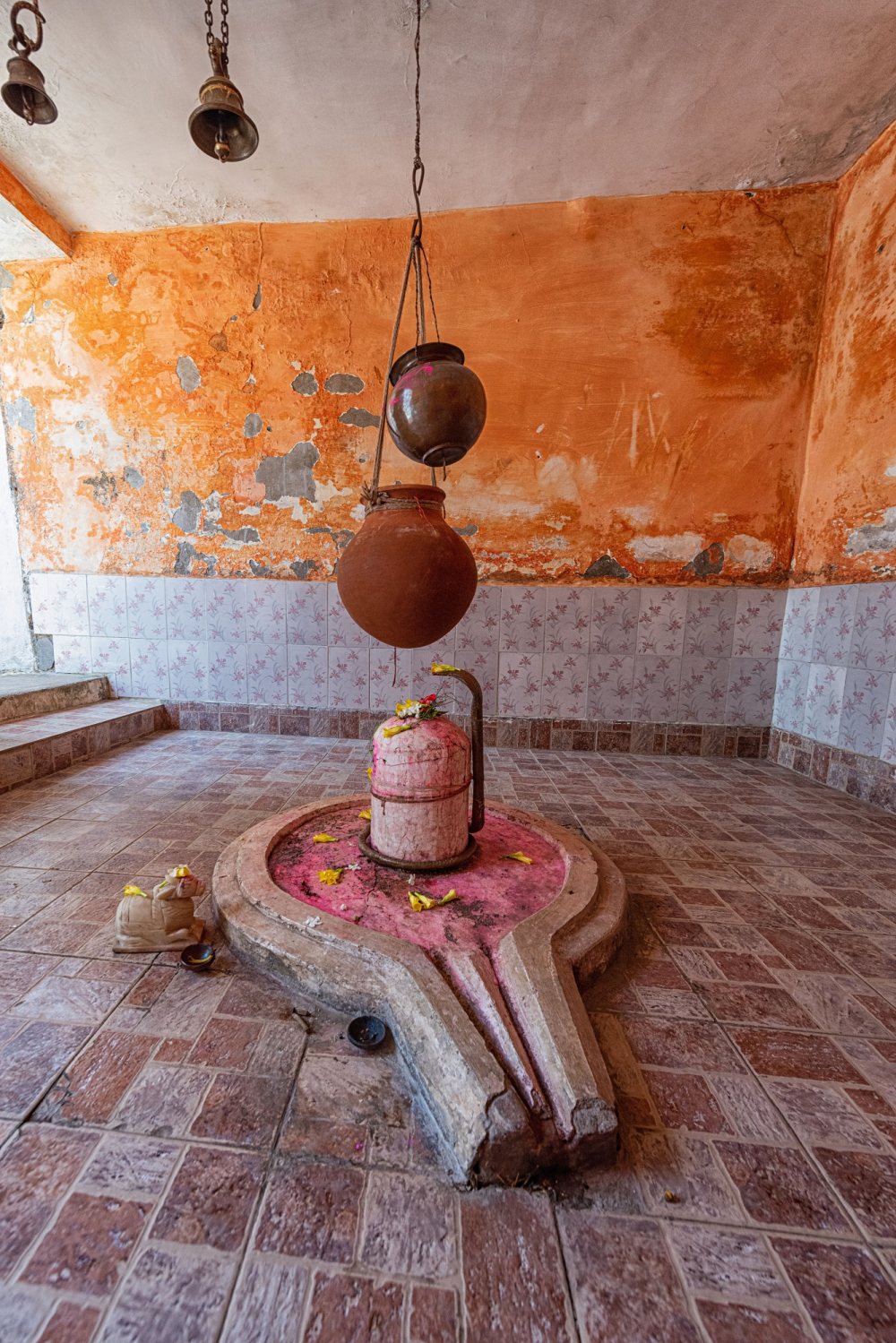
Madku Dweep, New Shiva Temple. The excavated material from the site has been re-used in the construction of this temple.
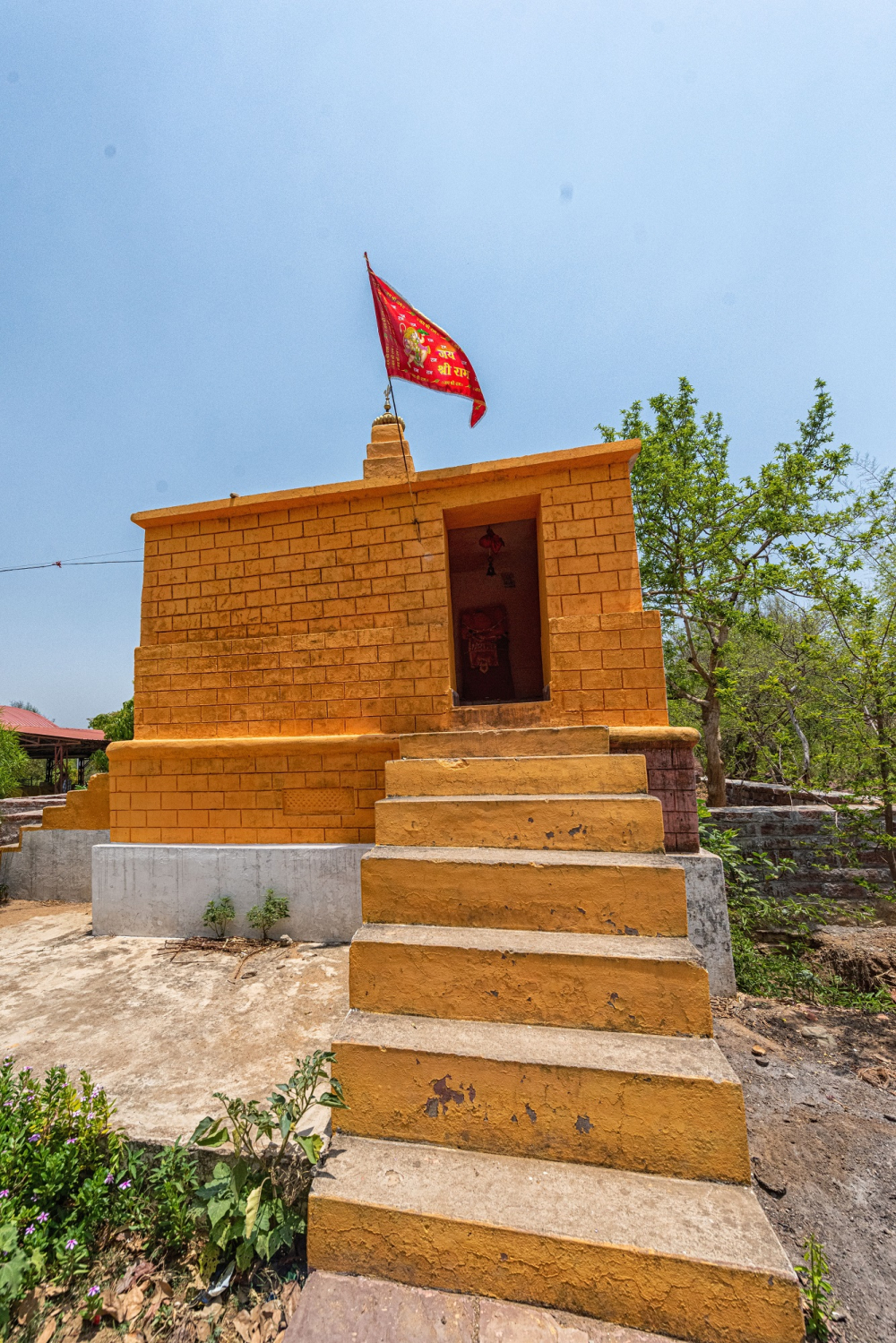
Madku Dweep, Hanuman Temple.
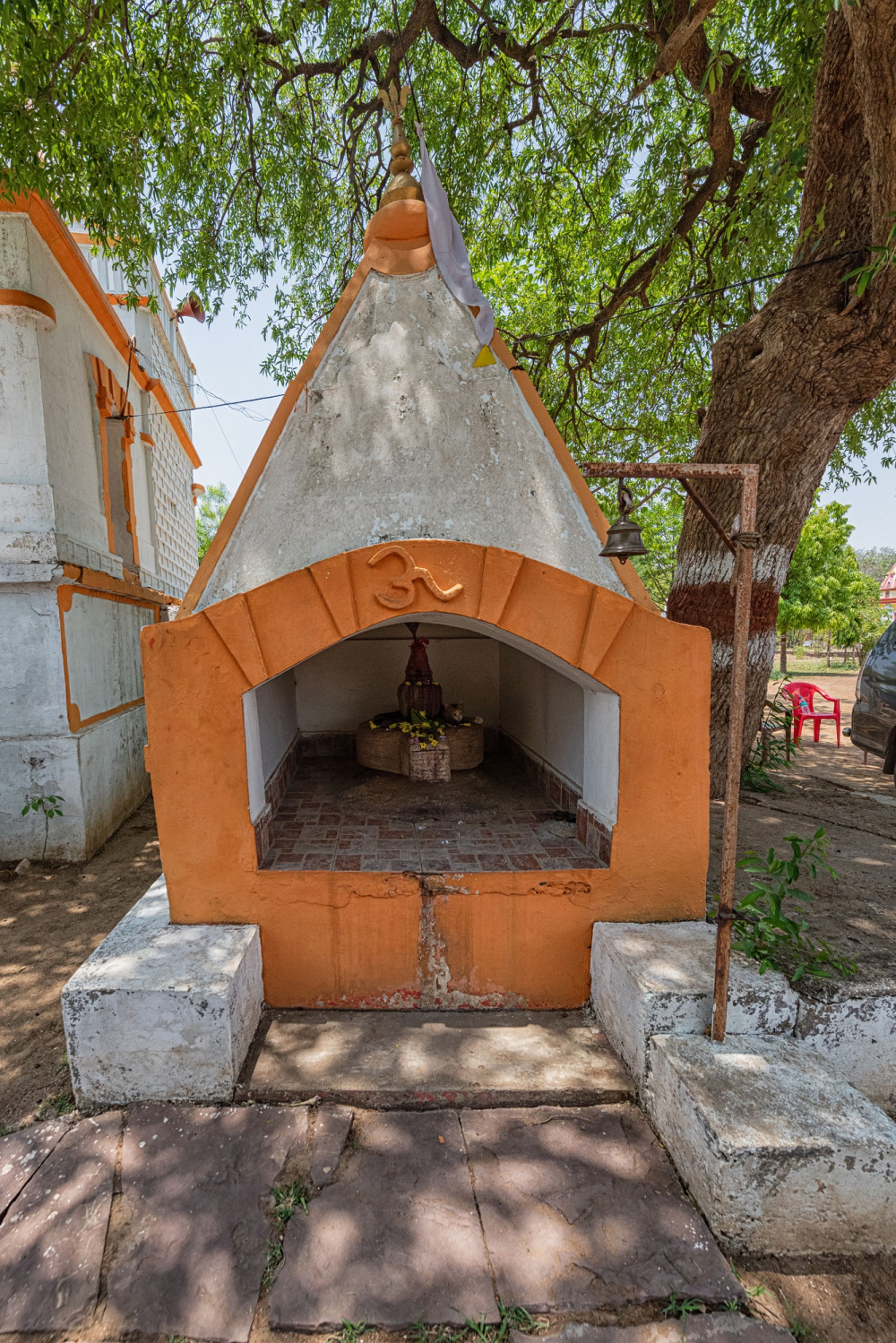
Madku Dweep, Harihara Shrine. The newly constructed temple houses an old Jalahari (Harihara) as its altar image.
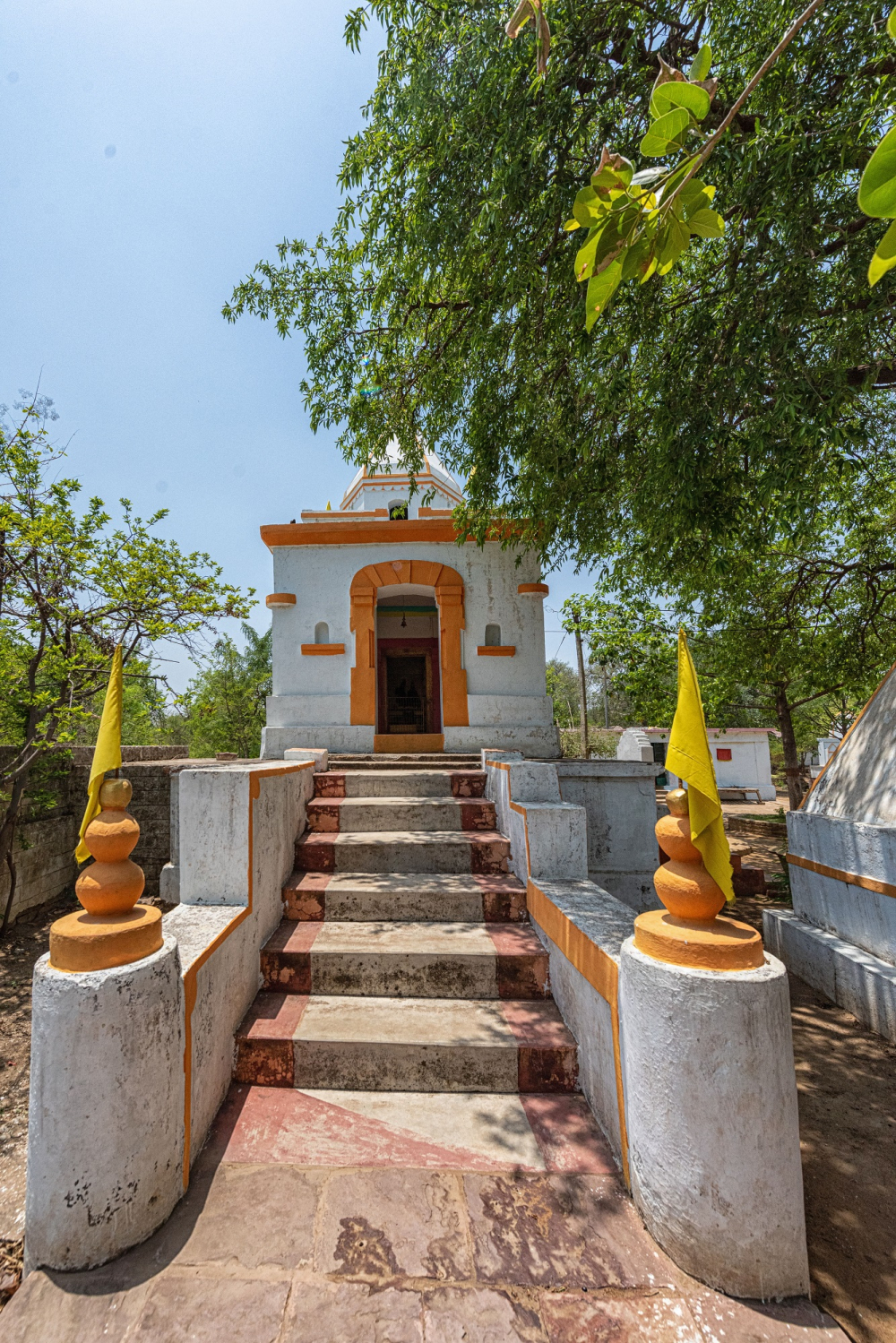
Madku Dweep, Newly Constructed Radha Krishna Temple. This temple incorporates old slabs in its construction.
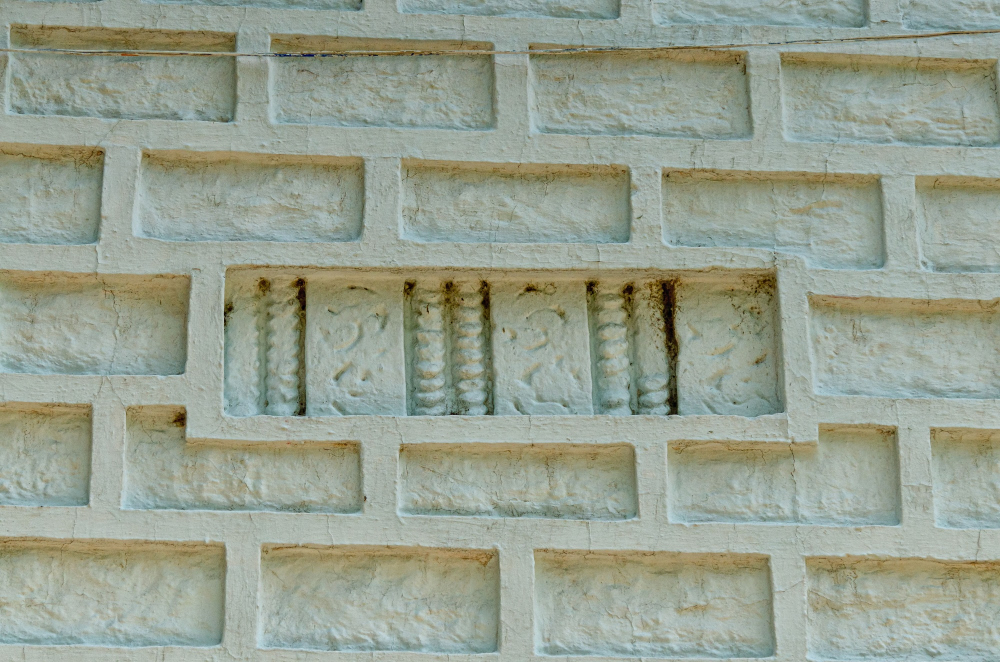
Madku Dweep, Radha-Krishna Temple- Re-use of Old Material in the Construction of New Temple.
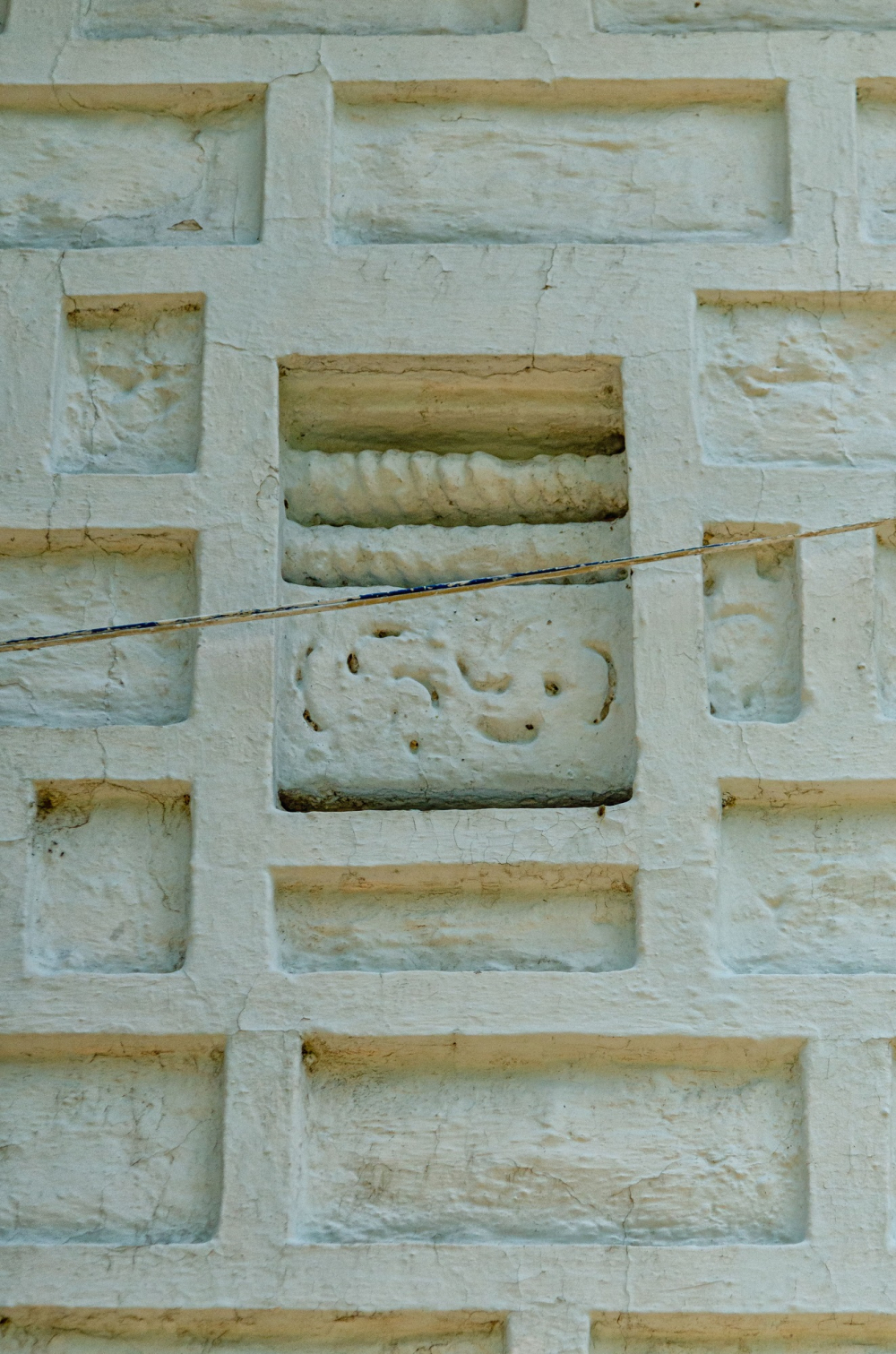
Madku Dweep, Radha-Krishna Temple- Re-use of Old Slab in the Construction of New Temple.
According to Sharma, Madku Dweep was originally called Mandku Dweep. It was named after sage Mandku whose sculpture in round sits between two new shrines inside the site.The sculpture is fairly recent. He is also accredited for the establishment of an ashram here and composing the Mandku Upanishad. The site has a Sthalamahatmaya called the Dhumnatha Mahatmaya. It is most certain that the two texts are not the same as the latter is written by Pandit Kriparama Gauraha, a resident of Bhhatapara. The lack of historical or textual evidence in regard to the construction of Madku Dweep by Sage Mandku puts Sharma’s statement in question. In fact, it indicates a modest attempt to recreate the history of the site.
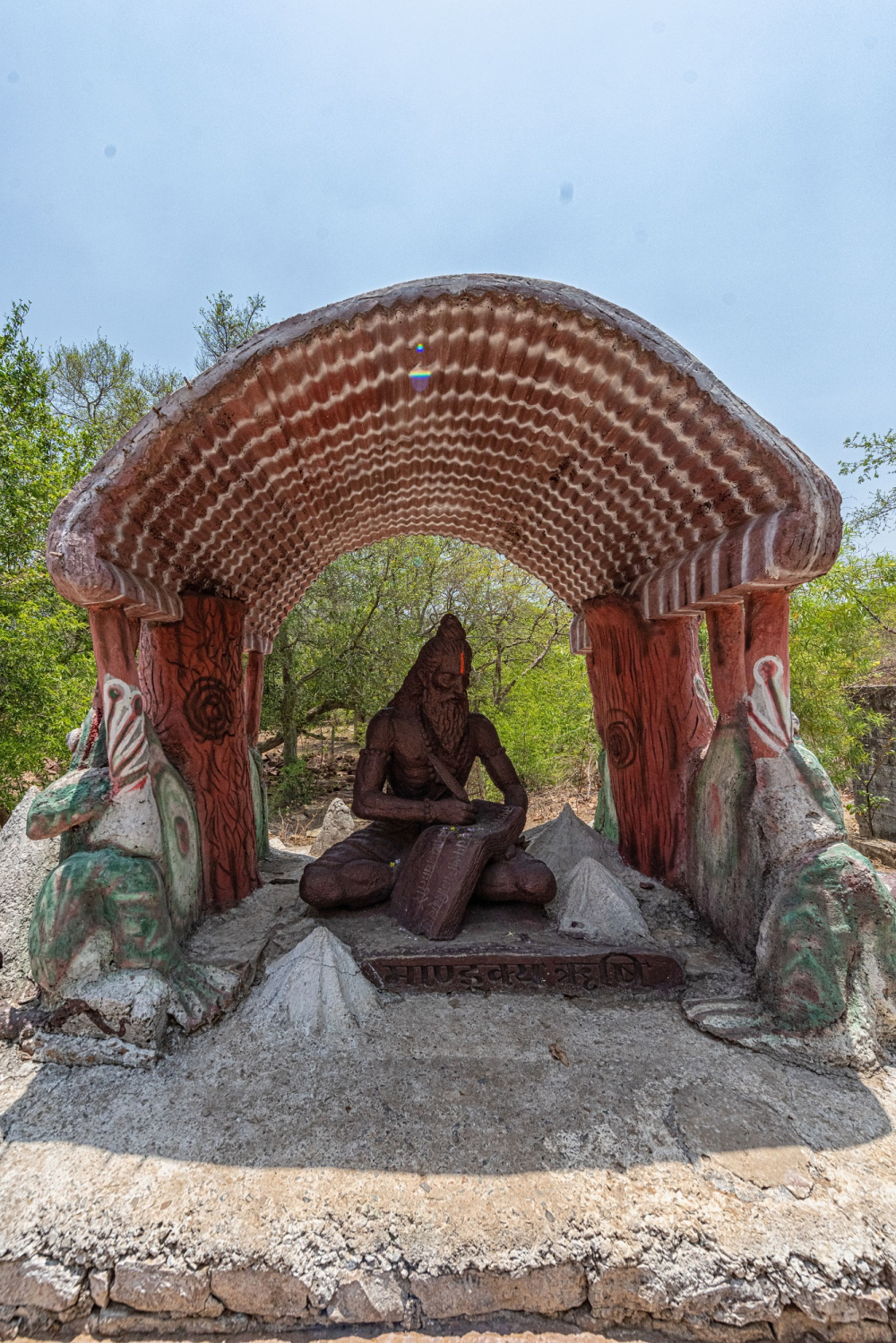
Madku Dweep, A New Sculpture of Sage Mandku. It is placed between two newly constructed shrines of Hanuman and Radha-Krishna.
Other archaeologists and scholars from the region- G. L. Raykwar, Rahul Singh etc, have also contributed in the historical and archaeological reconstruction of Madku Dweep. Research of these local researches are compiled in the धूमनाथमहात्मय (मदकूद्वीपमाहात्म्य) authored by Pandit Kriparama Gauraha. The text is divided into two sections. The first section includes brief write-ups by G. L. Raykwar, Rahul Singh, Arun Sharma and Prabhulal Mishra. The second and last section of the text is the Madku Sthalamahatmaya.
G.L. Raykwar of the Department of Culture found pre-historic artefacts from the site, which he states, points at the antiquity of the site. Rahul Singh discusses two stone slabs from the site published in the 1956-60 Annual Report of the Indian Epigraphy. Now, in the Vishakapatnam ASI office, the first slab is a fragmentary inscription in Brahmi/Prakrit. It records a deity and refers to an akhakanivi (akshayaniei) in characters of 3rd century CE (Appenidx B 173).[2] The second slab yields no information, and is in shell character[?] (Appendix B 245).[3]Arun Sharma, the archaeologist behind the rebuilding of the site believes that the reconstructed temples belong to the 10th-11th centuries CE. He informs about the re-use of material from the excavated structure in the construction of new shrines at the site. Rahul Singh’s video on the site bolsters the claim. Dr Prabhulal Mishra suggests that these temples belong to the Kalachuri time-period. According to Ramendranath Mishra, one of the dislodged male sculpture from the site is of Ratnadeva, king of Ratnapura who ruled in the 11th century.
The antiquity of Mandku Dweep can be traced back to the prehistoric times. Excavation unearthed pre-historic stone tools, pottery sherds, coins and, inscriptions in Brahmi and Shankha scripts dating to BCE 3rd century.[4]
Madku Dweep is also known for the temples and sculptures excavated and, reconstructed by archaeologist Arun Sharma. Sharma reconstructed the temples designing them into 19 pyramidal temples with garbhagrhas (sanctum) and free standing toranas (gateway) that could have originally been part of its mandapas (halls).
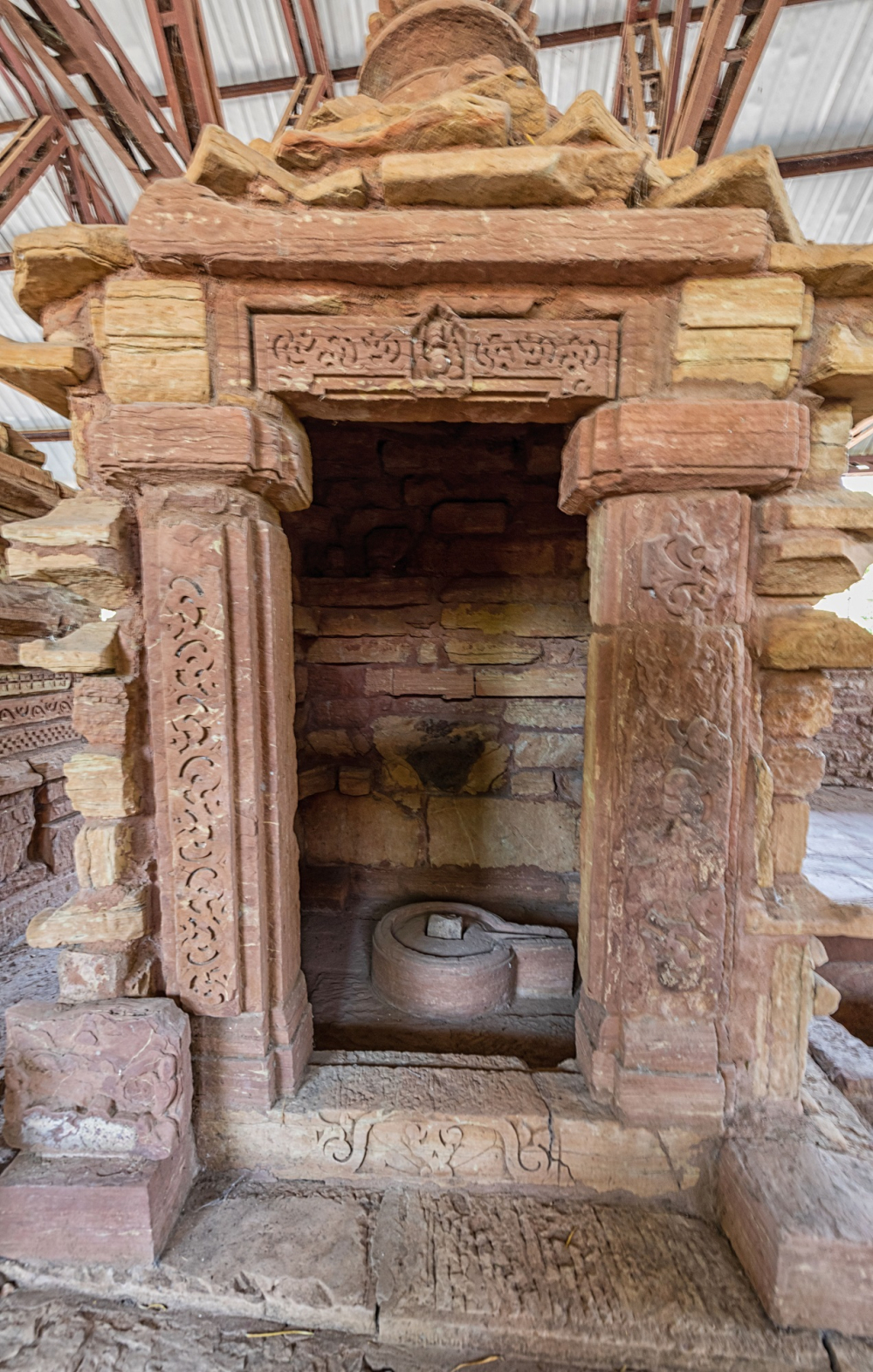
Madku Dweep, an East-Facing shrine.
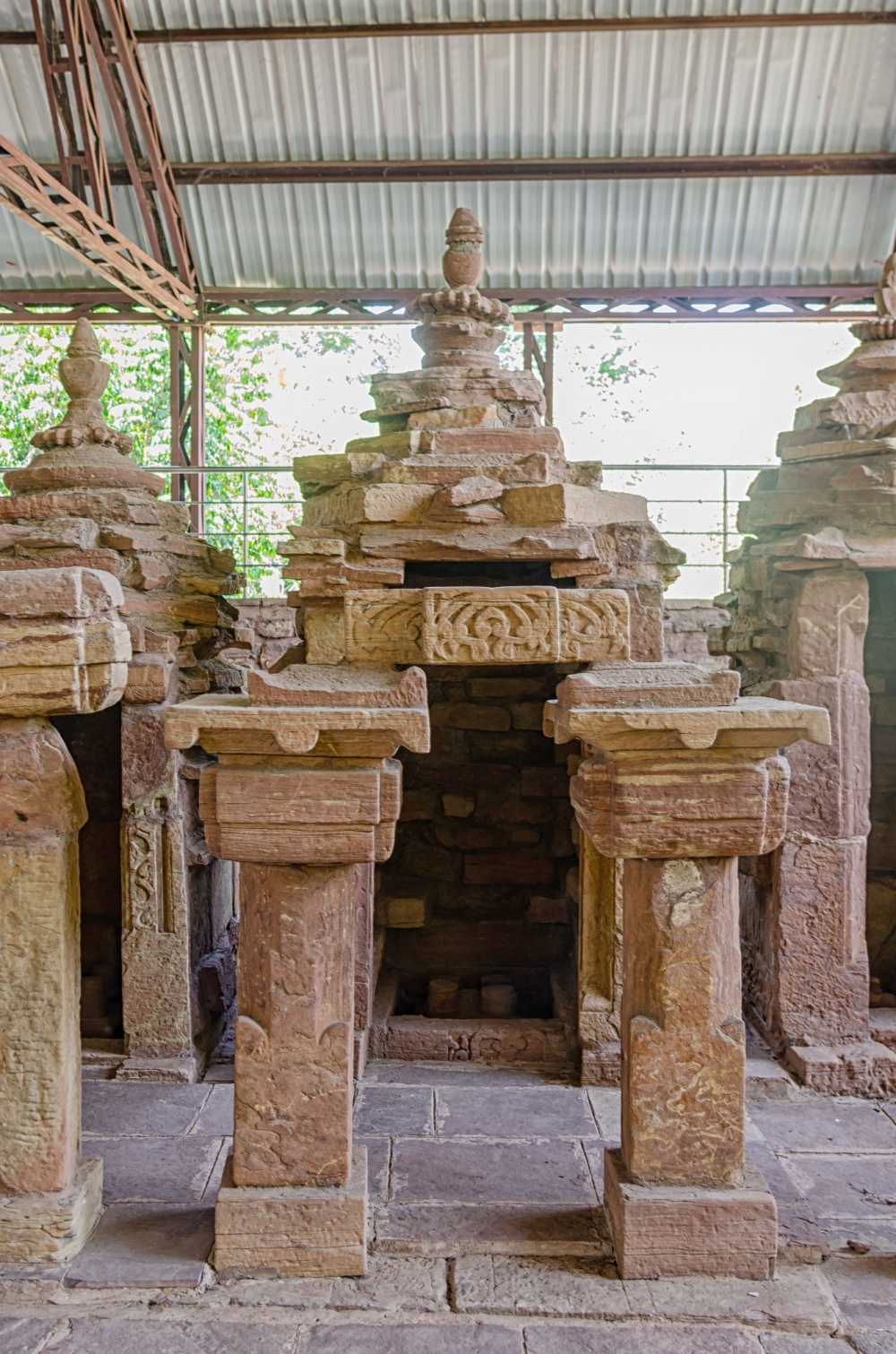
Madku Dweep, a Free Standing Torana in Front of an East-Facing Shrine.
The temples do not have niches or sculptures. The only piece of ornamentation on these temples are chequered board bands and foliage bands which look unusual in their setting. Occasional reliefs of human head and memorial stones stuck on the rear wall of the temples point at the unsought logic of placement.
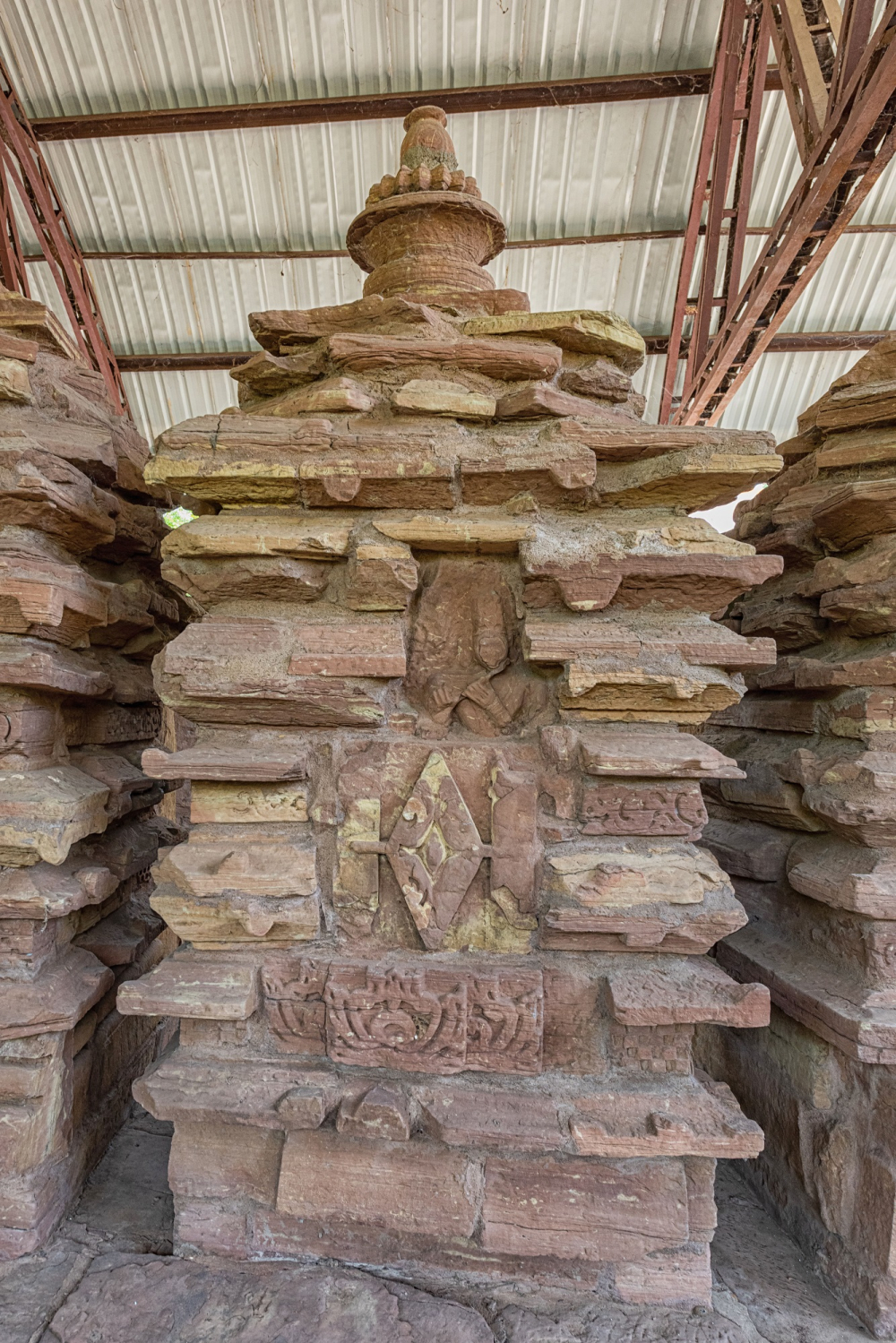
Madku Dweep, Rear End of the Shrine Executed Haphazardly with Foliage Bands, Vajra (Diamond) Motif and Bust of a Male Playing Flute.
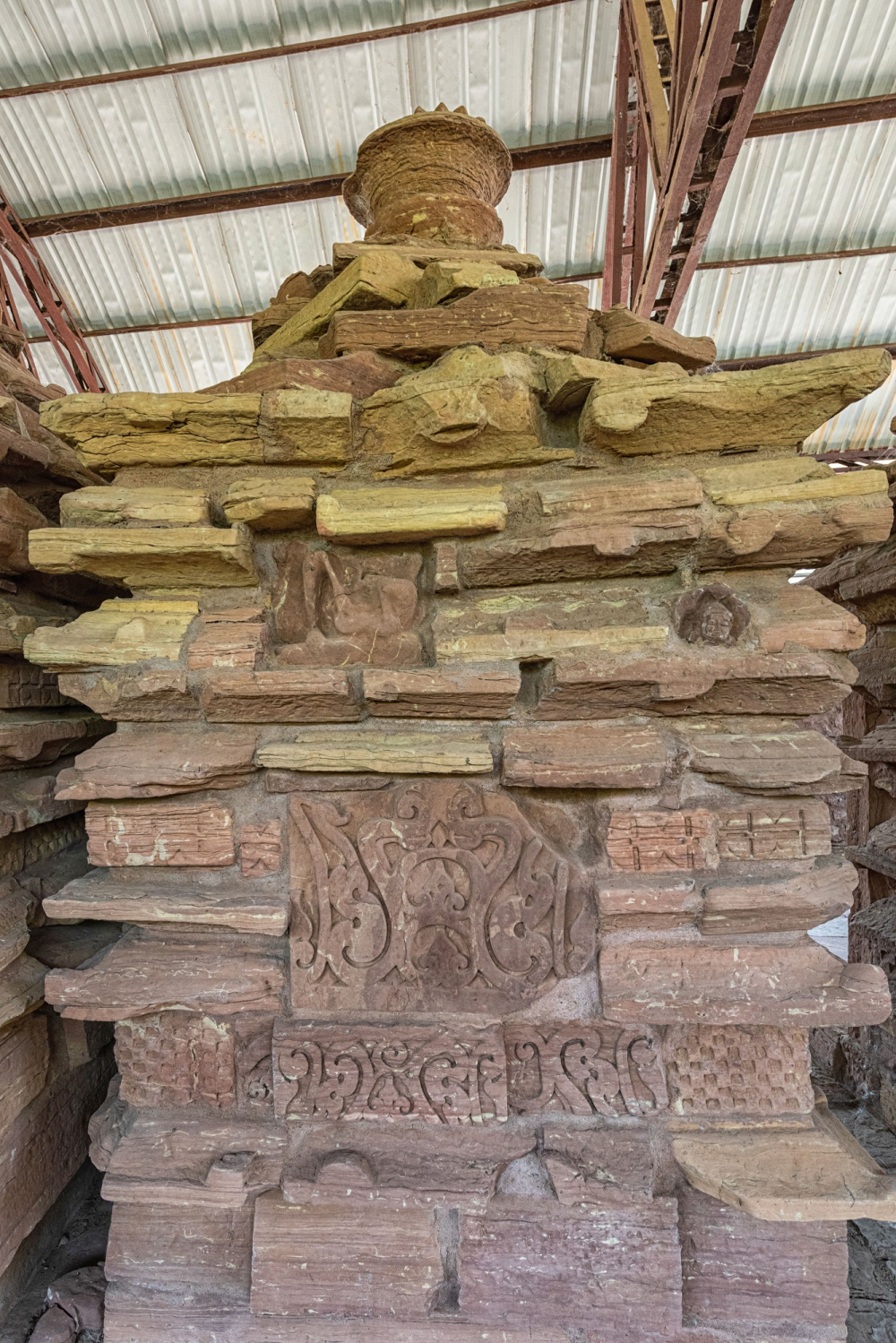
Madku Dweep, Rear End of a Shrine Put Together with a Combination of Foliage Bands, Chequered Board Bands and, a Human Head.
Dislodged sculptures from the site are significant in number. Particularly, significant are a few sculptures of seated male figures in state of meditation- anjali mudra (hands joined in veneration), closed eyes, occasionally flanked by female attendants. The unusual head gear, moustache and attribute speak of their trans-regional origin.
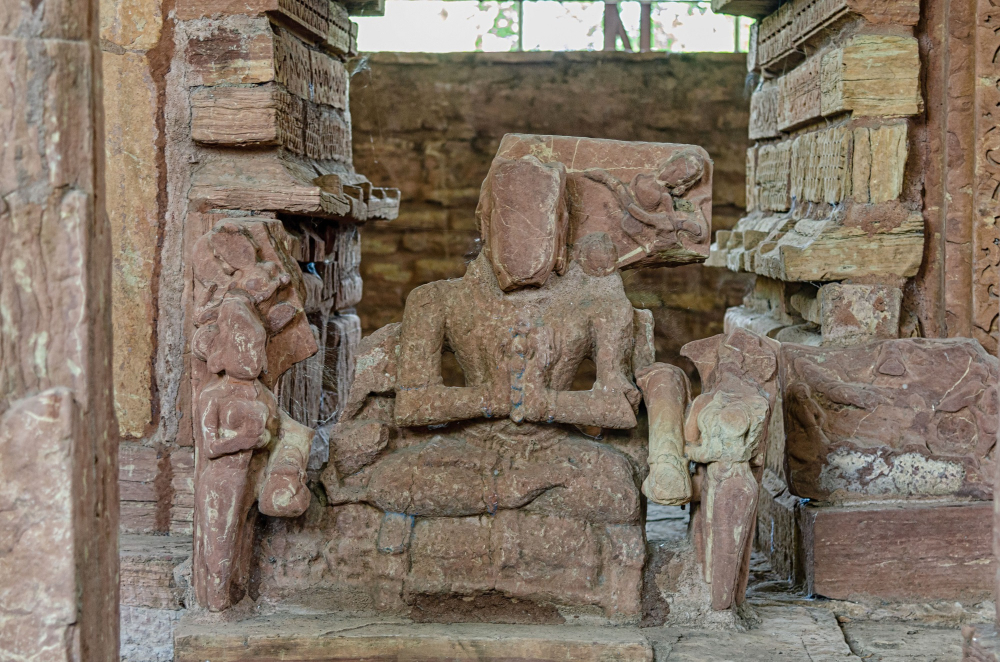
Madku Dweep, Seated Male Figure in Meditation (accompanied with attendants and vidyadhars).
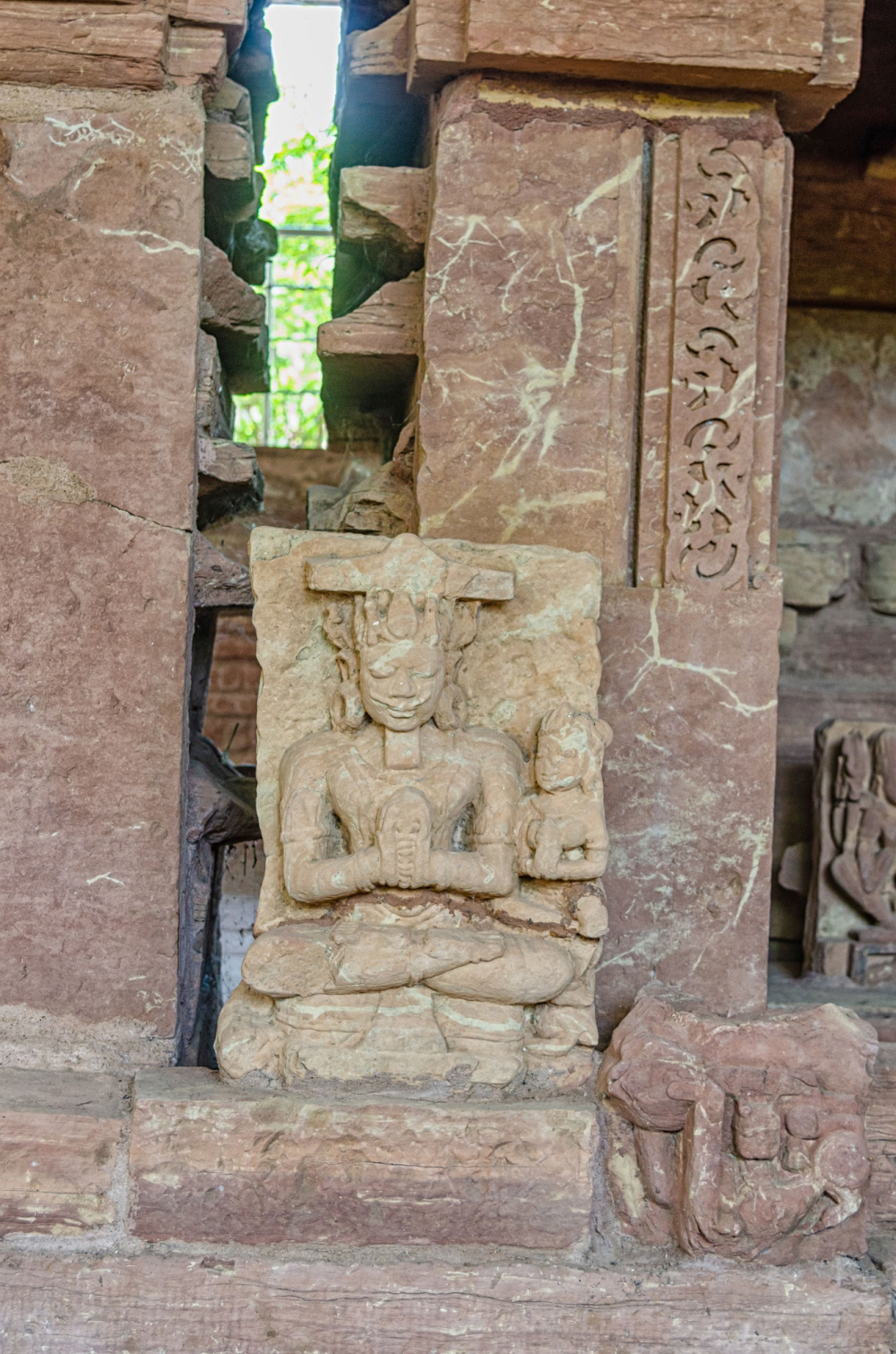
Madku Dweep, Seated Male in Meditation (accompanied with his attendant or, spouse).
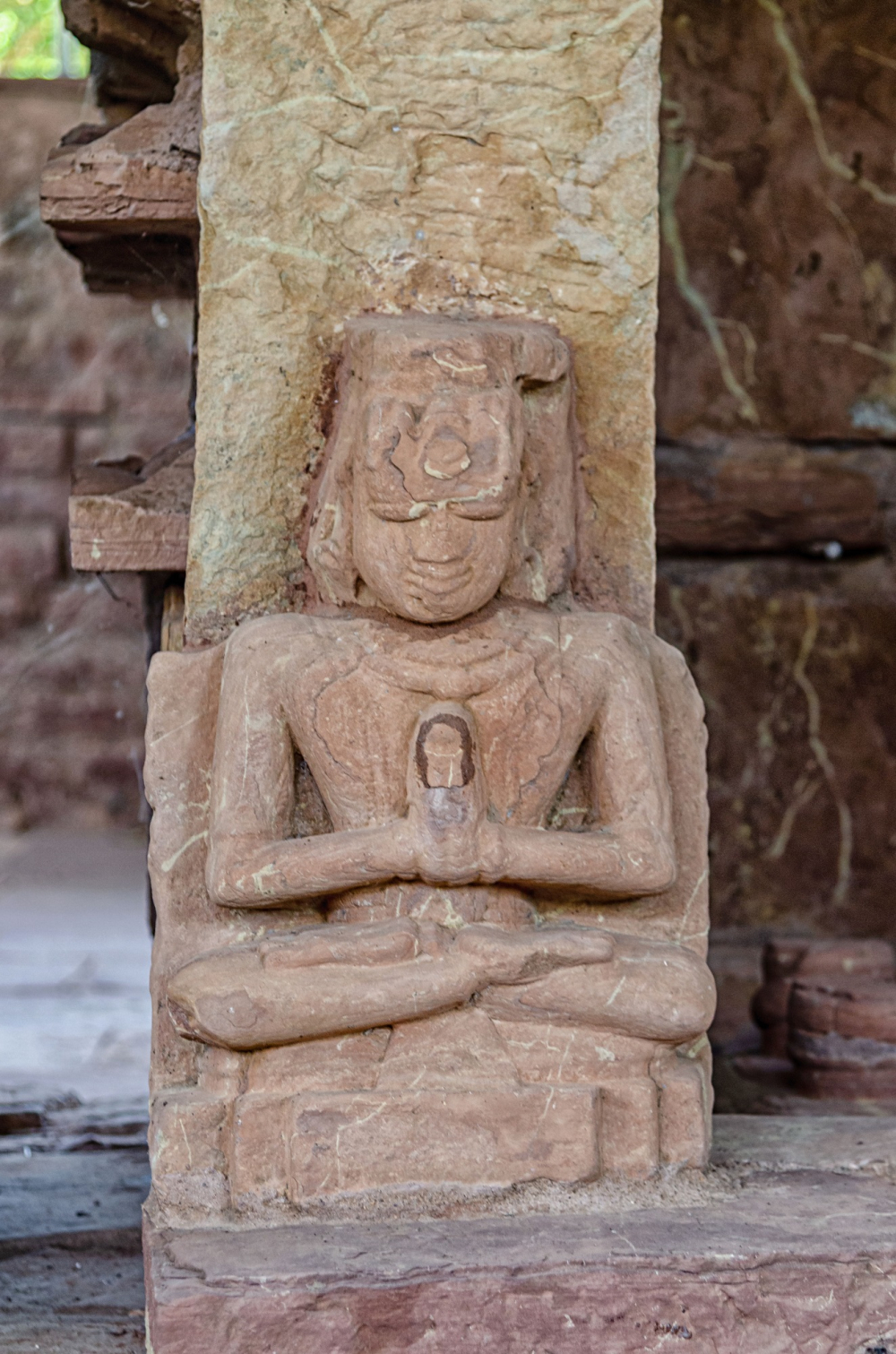
Madku Dweep, Meditating Male Figure.
While some have recognised them as devotees others have claimed their royal character. One such sculpture has been recognised as king of Ratnapura, however, the dearth of epigraphic evidence from the site out rules the claim. Among the seated group, the most interesting is the one rendered with a pair of cats on its base.

Madku Dweep, Meditating Male Figure. The seated male is flanked by two attendants and, maladhars (garland bearers) on the top. The pedestal is unique in its execution of a pair of cat, wearing similar neck piece as the chief figure. The detailed execution indicates at the royal nature of this sculpture. This is possibly the sculpture that has been recognised as the king of Ratnapur.
The execution of cats with a meditating male figure, although compelling is difficult to explain. Another unusual occurrence at the site is of a rare kind of Sivalinga called smarthalinga. It has five projections- four of them arranged in a square and the fifth one in the centre with a circular top. According to Prabhat Kumar (a local archaeologist from Chhattisgarh), the smarthalinga signifies the coming together of five Hindu sects.It came out of Shankaracaraya’s smartha tradition, which aimed at harmonious existence of various Hindu sects. Quite a few smarthalingas have been found from Mandku Dweep.
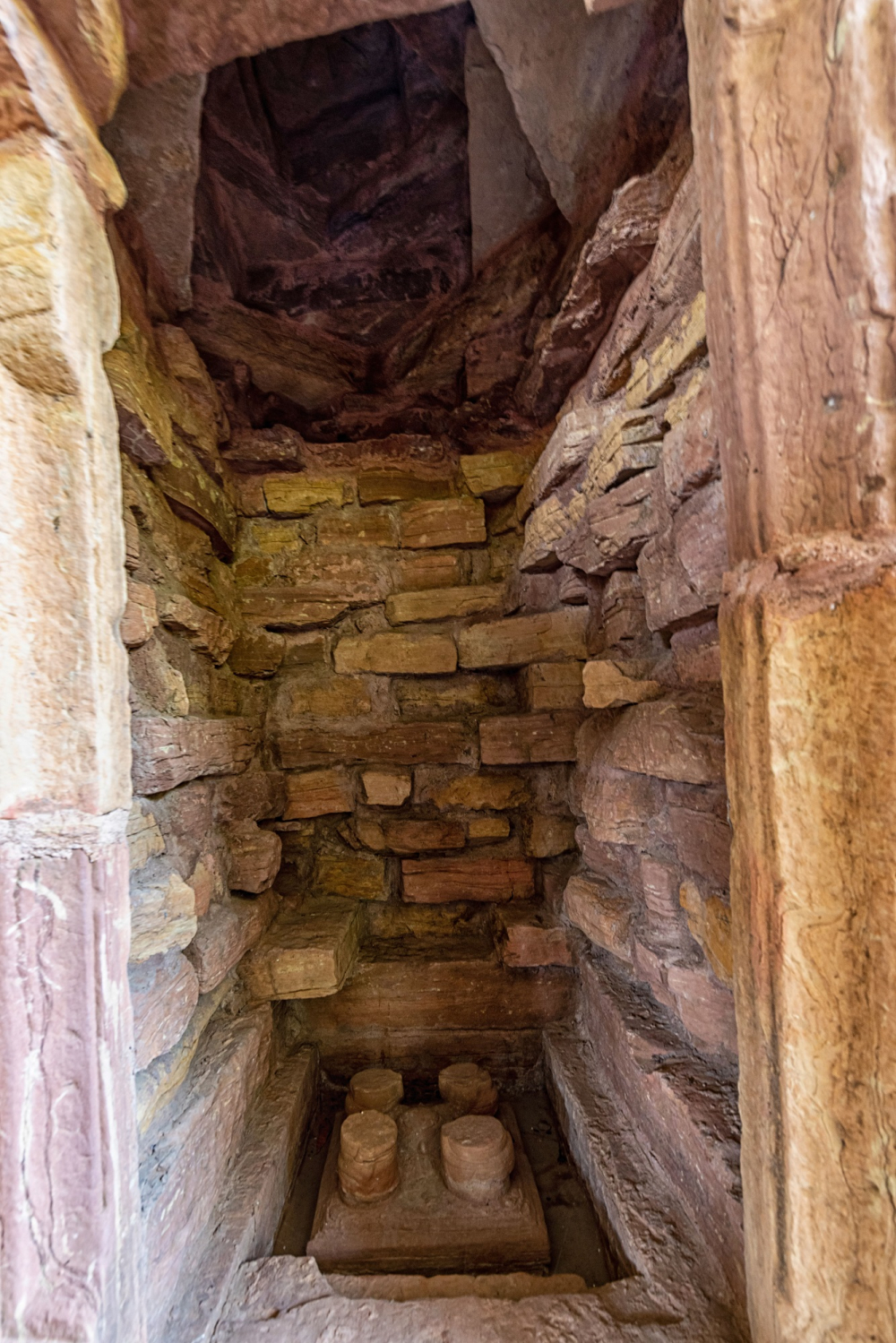
Madku Dweep, Altar Image, Smarthalinga[?].
A few Shivalingas, Ganesha, and, small seated sculptures of Uma-Mahesh have also been recovered from the sanctum of the temples. The temples and their sculptures do not provide insight in to the affiliation of these temples. Local scholars agree on the dedication of these shrines and site to Shiva.

Madku Dweep, Pedestal without Linga.
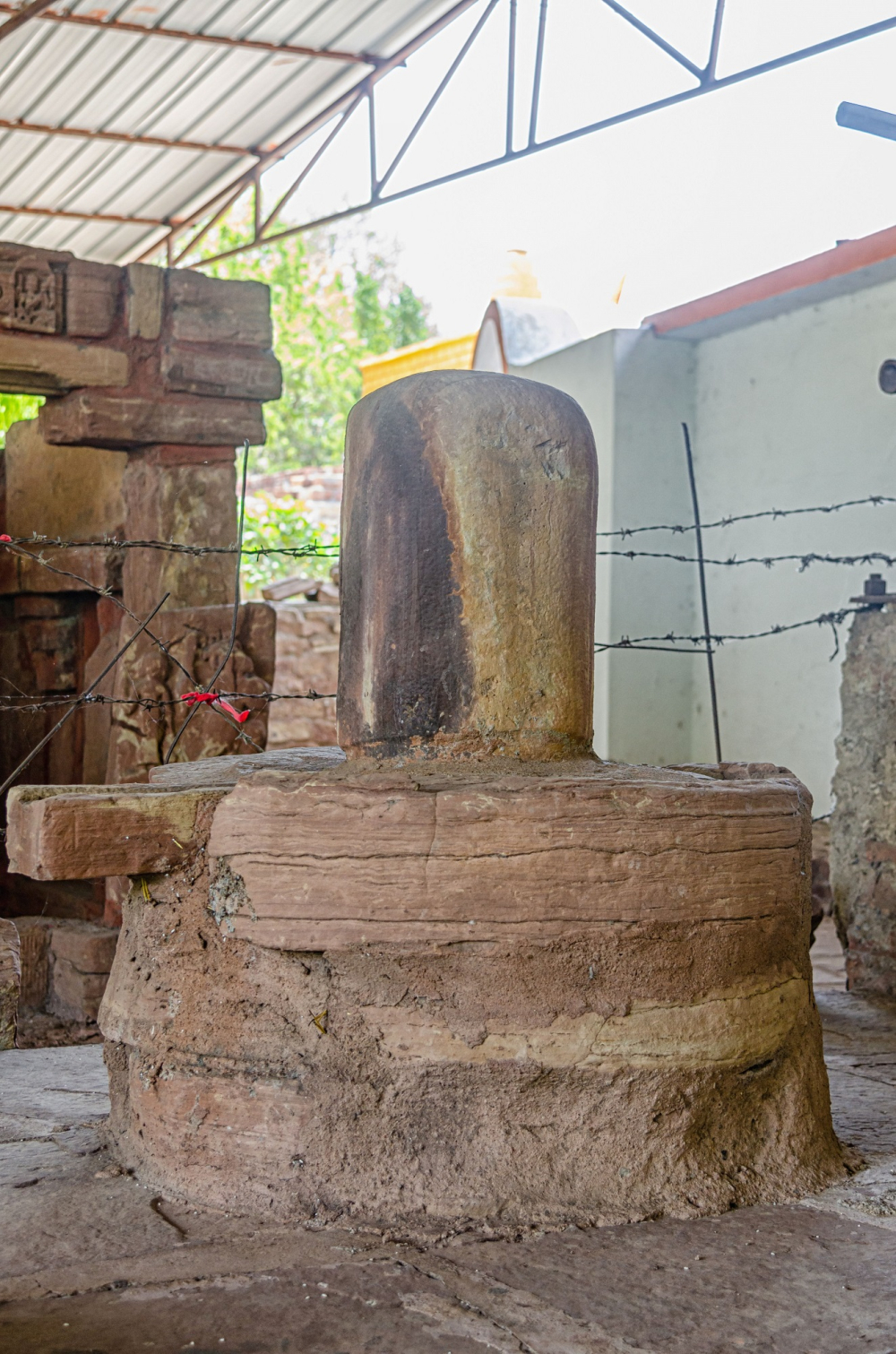
Madku Dweep, Dislodged Shivalinga.
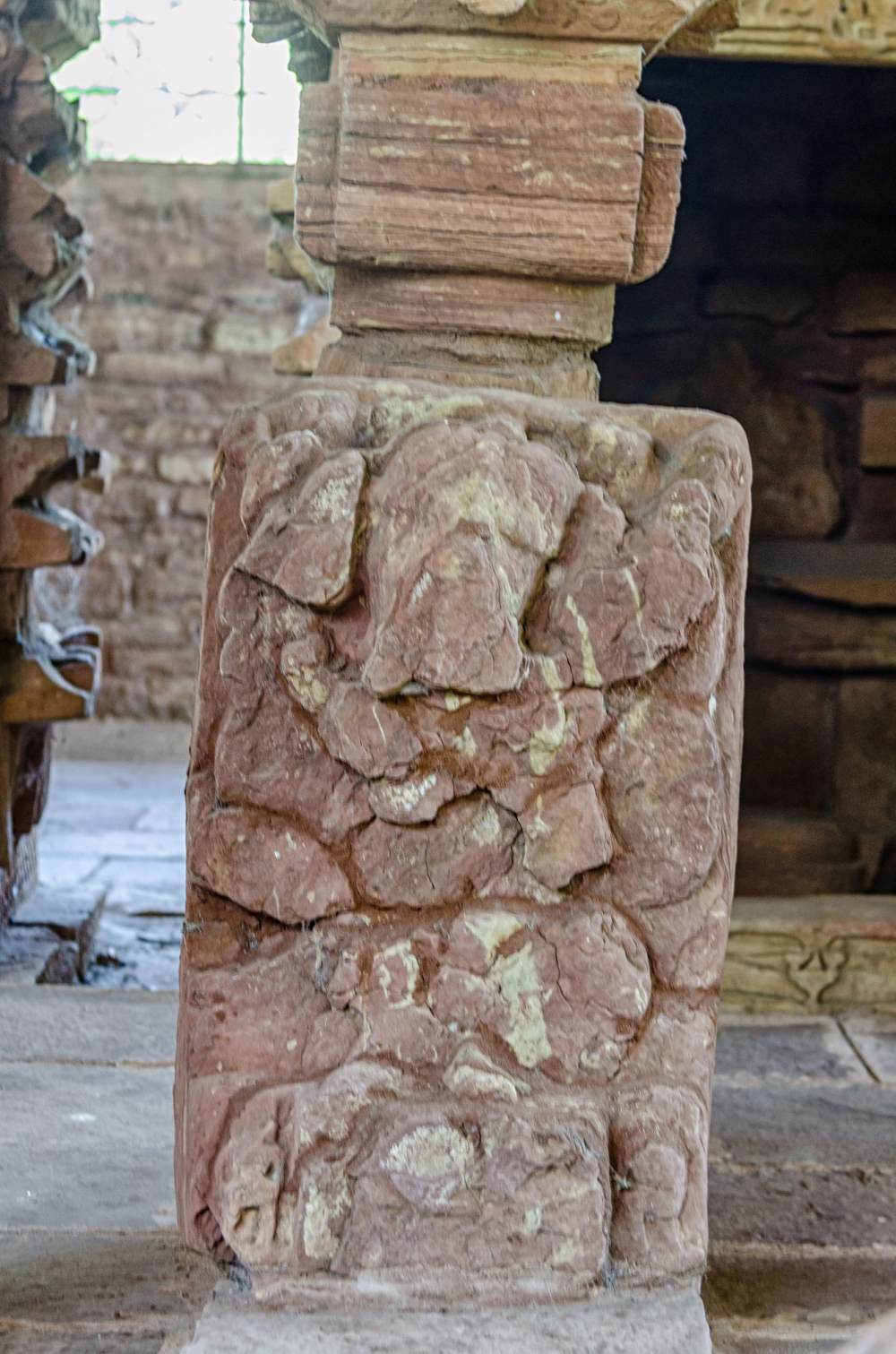
Madku Dweep, Defaced Sculpture of Ganesha
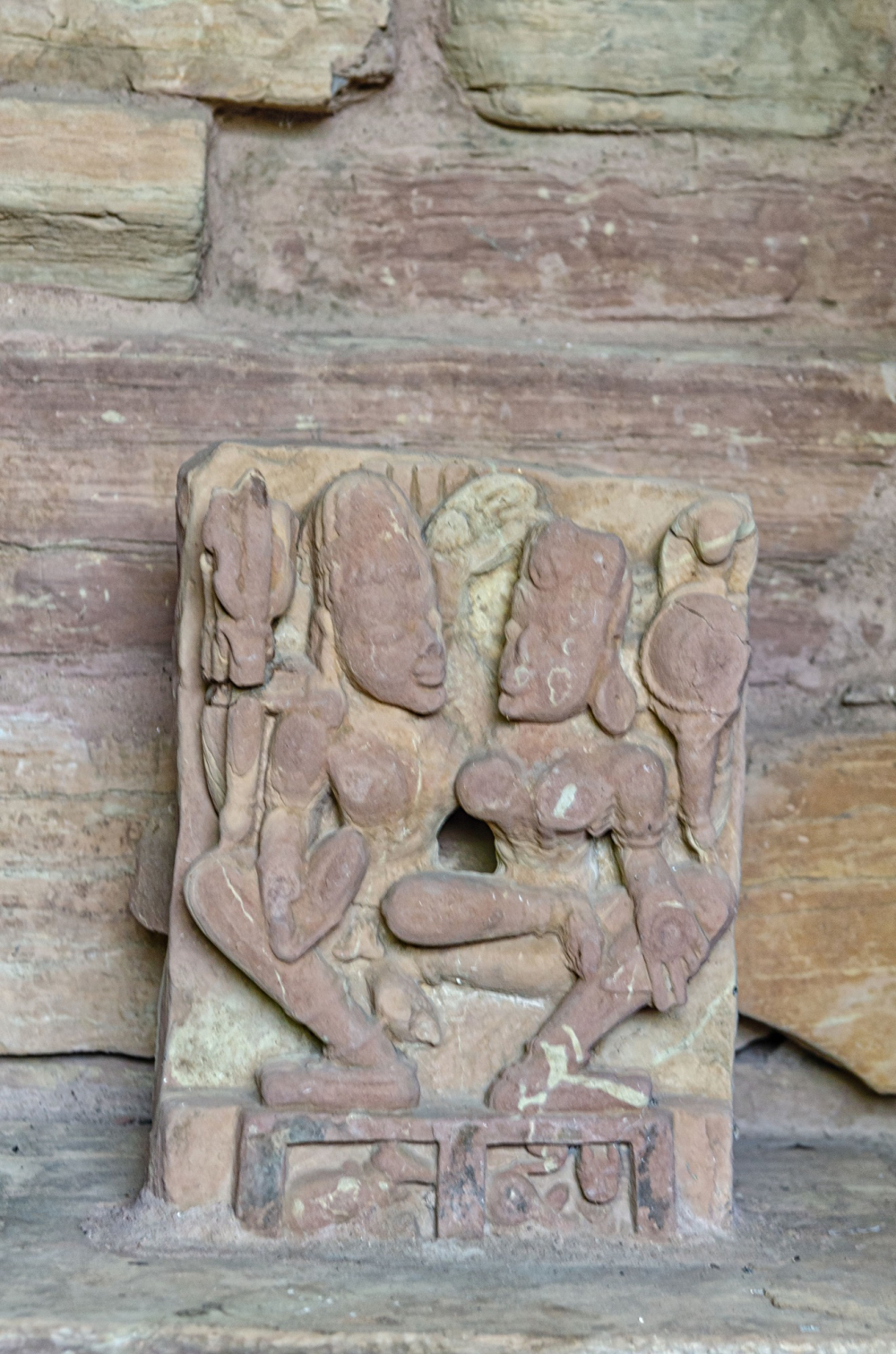
Madku Dweep, Altar Image, Uma-Mahesh.
The excavation at Madku Dweep yielded historical and archaeological remains, which provided no clue in to the time-period and spatial configuration of the site, or the style of the temples that once stood inside this complex. Despite inadequate information the aspiration to put together the excavated pieces led to extensive re-building activity at the site at the hand of the State Archaeology Department. The Department in its attempt to reconstruct the site fashioned a new history of the site, created by sage Mandku and was home to 19 identical Shiva temples, even though the temples indicated haphazard execution in its elevation and occasional reliefs of warriors and human heads randomly sticking out of the temple walls. The intervention of the state Archaeology Department in terms of imposing architectural uniformity redefined the heritage, history and culture of Mandku Dweep.
This content has been created as part of a project commissioned by the Directorate of Culture and archaeology, Government of Chhattisgarh to document the cultural and natural heritage of the state of Chhattisgarh.
[2] Sarkar, D. C. ed., 1963. Annual Report on the Indian Epigraphy 1959-60. Delhi: Manager of Publication, p. 61.
[3] Ibid, 71.
[4] Sarkar, D. C. ed., 1963. Annual Report on the Indian Epigraphy 1959-60. Delhi: Manager of Publication, pp. 61 and 71. For detail see, https://bit.ly/328SXdK
